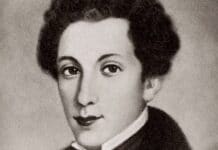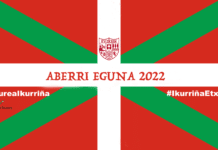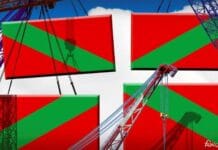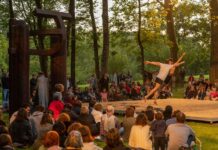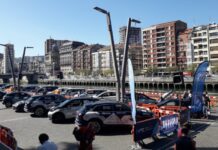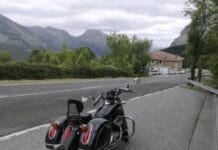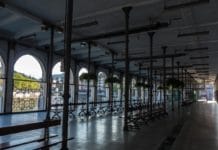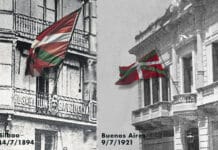Estudios Durero arte grafikoen euskal enpresa bat da, besteak ez bezalakoa. Aski da haren webgunean jira bat egitea, haren ikuspegia askoz urrunago doala ulertzeko, era horretako enpresa batean espero duguna baino. Haiek ulertu dute enpresa gisa duten kategorizazioak, “arte grafikoak”, markatu behar duela haren ibilbidea, eta horregatik arteak leku nagusia hartzen du haien lanean.
Zalantzarik gabe, haren proiektu edo teknika batzuk, esaterako Didú, Tako, Estereoscópico eta D-dos, inpresio enpresa batengandik espero duguna baino urrunago doaz. Gu, halere, haietako lehenbizikoa hartuko dugu hizpide. Didú izenekoa.
Izan ere, lortzen zaila den zerbait lortu baitu, munduko hedabide garrantzizkoenek eta sonatuenek artikulu eta erreportaje zabalak egitea hartaz.
Hala kontatzen dute euren webgunean:
Didú Estudios Durero-k egindako metodologia bat da, erliebedun irudien tratamendu eta erreprodukzioarentzako. Erreminta teknologiko, artistiko eta pedagogikoen bidez, irudi digitalak ukitu daitezkeen irudietan bihurtzen ditu, ikusmenarentzako ez ezik, ukimenarentzat ere zentzua izanik. Interpretazio artistiko eta ehunduren, formen eta bolumenen analisi baten bidez, obra bakoitzerako produkzio prozesu bat zehazten da.
Didú-k irudiei artearen arloan hainbat aplikazio dituen balio pedagogikoa ematen die. Didú-k, lehenengo aldiz, itsuei argazki eta irudien munduaren ateak zabaltzen die; ONCE-k bermatutako lorpena, zeinek hasiera batetik Didú metodologia hobetzearen prozesuan parte hartu egin duen. Irudi bakoitzak lan zehatz eta desberdin bat behar du. Obra bakoitzaren analisi pertsonalizatua egin behar da, baita honen testuinguru artistikoa ezagutu. Honez gain, garrantzitsua da obrak itsuentzako ulerkorrak izatea. Didú hobekuntza etengabeko proiektua da. Gure teknika uneoro garatzen eta hobetzen jarraitzeko ikerketak egiten jarraitzen dugu, beti filosofia berberarekin: ukitu hobeto ikusteko.
Didú. Hoy toca el Prado. from Estudios Durero on Vimeo.
Lorpen berebizikoa, bai teknika eta bai lortu duen proiekzioa. Ez da erraza inorentzat, eta are gutxiago horrelako ezaugarriak dituen enpresa batentzat, itxura batean urrundua abangoardiako teknologiatik, izan ere, lortu baitu hedabideen interesa piztea, eta maila horretako interesa lortzea nazioartean.
Bidenabar. Informazio batzuetan badirudi garrantzizkoa den gauza bakarra erakusketaren edukitzailea dela, El Prado Museoa. Maila horretako zentro artistiko batek teknika honi erakusketa bat eskaintzeak duen balioa gutxietsi gabe, ez da ahaztu behar benetan garrantzizkoa hau dela, Didú teknika.
Bilboko Arte Eder Museoak baditu, orain hiru bat urtetik hona, bere bildumako bost obra, teknika horretan erreproduzituta.
Washington Post – 2015/2/11 – AEB
A remarkable way for the visually impaired to sample the masterpieces
The No. 1 unspoken rule in an art museum: Don’t touch. Museum guards are strategically placed throughout museums to ensure harmful oils on visitors’ hands won’t corrode artwork. But at the current exhibition at the Museo del Prado in Madrid, touching is encouraged. Works from masters such as Leonardo Da Vinci, Francisco Goya, and El Greco can be felt at the exhibition for the museum’s visually impaired guests. It features six three-dimensional works from different genres created using a technique called “Didu” that adds volume and texture. The works are accompanied by text in written in Braille. The museum’s sighted guests can experience the exhibit with darkened glasses and an accompanying audio guide.
(Sigue) (Traducción automática)
——————————————————–
The New York Times -6/3/2015 – USA
At Museo del Prado, Blind Visitors Can Touch Masterpieces

Guards make sure visitors to the Museo del Prado stay at arm’s length from its masterpieces. But here on a recent morning was José Pedro González running his fingers over one of El Greco’s most famous paintings, “The Nobleman With His Hand on His Chest.” He went back and forth over the nobleman’s eyes, rubbed his beard and eventually reached his hand, tracing the edges of each digit. The work, of course, was a copy. But more surprisingly, the copy was in three dimensions so that Mr. González, who is 56 and has been blind since the age of 14, could experience the painting firsthand.
(Sigue) (Traducción automática)
——————————————————–
Time -12/2/2015 – USA
This Exhibit Lets Blind People Touch the Mona Lisa
A museum in Madrid, Spain has unveiled an inclusive exhibit featuring artistic masterpieces recreated so the blind can feel how they look, CBS News reports. The works on display at the Prado Museum were made using the Didu technique, which adds texture to paintings. The exhibit, titled “Hoy Toca el Prado” opened January 20 and features works like El Greco’s El caballero de la mano en el pecho and Leonardo da Vinci’sMona Lisa.
(Sigue) (Traducción automática)
——————————————————–
Daily Mail – 10/2/2015 – Gran Bretaña
Feeling artistic: Gallery unveils specially created versions of classic paintings that blind people can ‘see’ by touching them
Given it’s been stolen, spray-painted and attacked with a cup of tea, touching the Mona Lisa is one of the rarest treats in the world. But there’s now an easy way to get hands-on with da Vinci’s masterwork – after a gallery introduced a 3D version for the blind. A replica of the 16th Century portrait, whose real-life counterpart is behind bulletproof glass in the Louvre, is at Madrid’s Prado Museum in a bid to inspire art-lovers with a new perspective.
(Sigue) (Traducción automática)
——————————————————–
CBS News – 10/2/2015 – USA
Museum displays paintings for the blind
A blind person uses her hands to feel a copy of El Greco’s “The gentleman with his hand on his chest” at The Prado Museum in Madrid,. ‘Hoy toca el Prado’ (Touch The Prado) allows blind or vision-impaired visitors to explore copies of six masterworks with their hands.
(Sigue) (Traducción automática)
——————————————————–
Smithsonian – 26/2/2015 – USA
Please Touch the Art: 3-D Printing Helps Visually Impaired Appreciate Paintings
In museums the world over, one rule trumps all others: look but don’t touch. But what if you can’t look? Why should being blind prevent a person from appreciating works of art that are not only masterpieces, but also an important part of his or her country’s cultural history? That was the question facing the Madrid’s Prado museum. As with many other European museums, the Prado has worked hard over recent years to widen access to its collections, investing in outreach programs or simply installing wheelchair ramps throughout its historic galleries. Up until now, however, blind and partially sighted people have been unable to enjoy the museum’s vast collection, which includes iconic works by Goya, El Greco and Velázquez.
(Sigue) (Traducción automática)
——————————————————–
Sydney Morning Herald – 7/3/2015 – Australia
Prado exhibition unlocks paintings for the blind
Guards make sure visitors to the Museo del Prado stay at arm’s length from its masterpieces. But here on a recent morning was Jose Pedro Gonzalez running his fingers over one of El Greco’s most famous paintings, The Nobleman With His Hand on His Chest. He went back and forth over the nobleman’s eyes, rubbed his beard and eventually reached his hand, tracing the edges of each digit.
(Sigue) (Traducción automática)
——————————————————–
The Star – 13/272015 – Canadá
Go ahead and touch the Mona Lisa
The No. 1 unspoken rule in an art museum: Don’t touch. Museum guards are strategically placed throughout museums to ensure harmful oils on visitors’ hands won’t corrode artwork. But at a current exhibition at the Museo del Prado in Madrid, touching is encouraged. Works from masters such as Leonardo da Vinci, Francisco Goya and El Greco can be felt at the exhibition for the museum’s visually impaired guests. It features six three-dimensional works from different genres created using a technique called “Didu” that adds volume and texture. The works are accompanied by text written in braille. The museum’s sighted guests can experience the exhibit with masks and an accompanying audio guide.
(Sigue) (Traducción automática)
——————————————————–
Last Updated on Abe 21, 2020 by About Basque Country



